Boots on the Ground
NIH Leaders Thank DOHS for Services During Pandemic
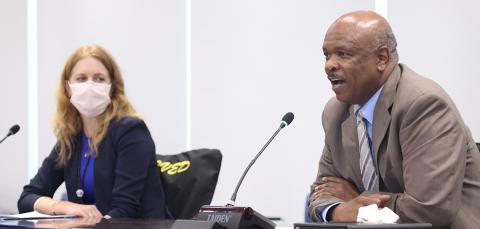
Photo: Chia-Chi Charlie Chang
While all NIH’ers work to safeguard public health, subsets of staff are tasked with keeping all NIH’ers safe. During the pandemic, one such group—the Division of Occupational Health and Safety (DOHS), part of the Office of the Director’s Office of Research Services—took on unforeseen roles in supporting employees’ physical and mental health.
NIH leadership recognized their contributions at a Sep. 21 gratitude event, continuing the tradition of thanking the above-and-beyond efforts of NIH’ers throughout the pandemic.
“I’m awestruck by everything you all do every day,” said Dr. Jessica McCormick-Ell, DOHS director.
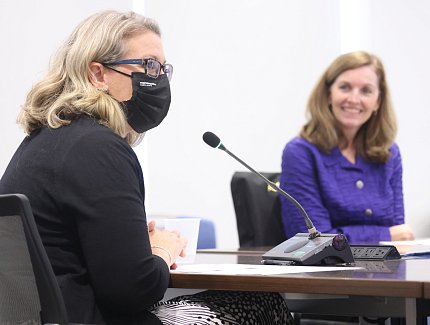
Photo: Chia-Chi Charlie Chang
“You without fail jump in and do whatever you need to do, as you’ve always done,” said NIH deputy director for management Dr. Alfred Johnson, who knows firsthand the plethora of DOHS duties, having previously served as ORS director. He thanked “the boots on the ground, because that’s where it all really happens.”
In normal times, DOHS is the division called when there’s an injury, hazard or exposure. DOHS staff also are tasked with mental health support, vaccine clinics, risk assessments, design review for renovations and construction projects, inspections and compliance, as well as crafting the comprehensive safety plan NIH uses.
During the pandemic, DOHS provided 2,000 clinical encounters per quarter for occupational health services, supported research pivots for Covid and collaborated to ensure supply chain needs were met. DOHS also conducted regular safety inspections, including 78 walk-throughs of the Central Utility Plant to identify and correct hazards.
“It was uplifting to see all the work you all have done that helps to keep us safe and healthy here on campus and more broadly in the community,” said Dr. Tara Schwetz, NIH acting principal deputy director. “That impact ripples out…nationwide and beyond.”
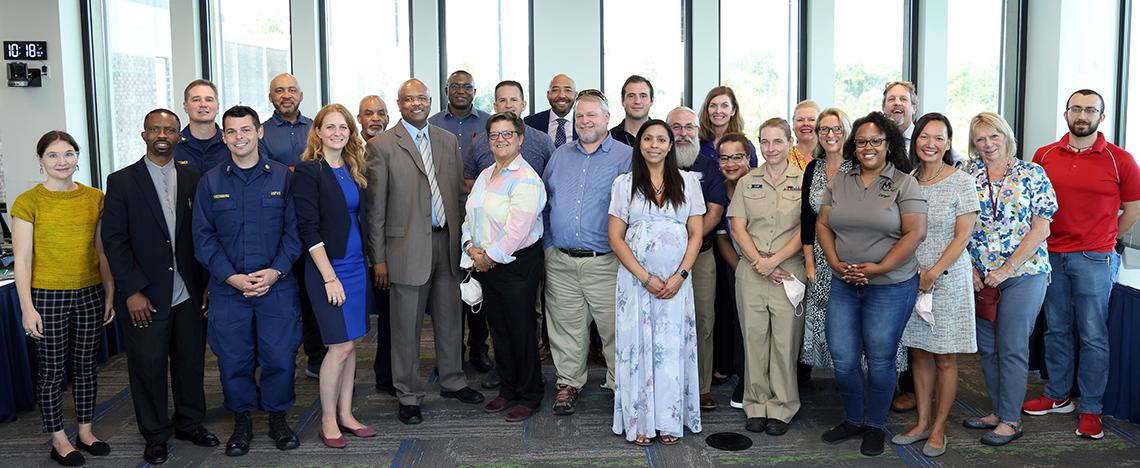
Photo: Chia-Chi Charlie Chang
McCormick-Ell thanked the division for rising to the challenges of an extraordinary time.
“The one thing I’ve heard over and over again is that you made people feel safer here than they felt anywhere else,” she said. “You helped alleviate anxieties, you listened to fears and concerns and you provided excellent guidance and advice to NIH staff.”
Several DOHS staff offered brief reflections during the hybrid event that featured about 30 people in a Bldg. 31 conference room and many more on Zoom.

Lt. CDR Megan Brose, the safety lead at NIH’s Rocky Mountain Laboratories (RML) in Hamilton, Mont., spoke virtually about the small but mighty maximum-containment NIAID research facility focused on current and emerging infectious diseases.
“Over the last couple of years,” she said, “our researchers conducted many critical experiments that were instrumental in the science behind the pandemic response, including initial rodent and non-human primate animal model studies of Moderna, Pfizer and AstraZeneca Covid vaccines.”
The team of 11 in Montana also supported the researchers who tested the stability of SARS-CoV-2 in different conditions and its susceptibility to disinfectants, research that informed national safety guidelines.
“Our group had to pivot quickly not only to get our safety duties done to support the pandemic response, but also to get our normal non-Covid duties completed at the same time,” she said.
During the pandemic, research continued into other infectious viruses such as Ebola and Marburg and, more recently, monkeypox. Teams continued routine biosafety duties while moving to a virtual format, including electronic review of biosafety data to facilitate rapid research.
“We did all this without a pause in research operations,” recounted Brose. “And in fact, there was a dramatic increase in research experiments conducted here during that time, which also meant a dramatic increase in our workload.”

The workload also increased and shifted dramatically for DOHS’s Employee Assistance Program, which provides consultations, referrals and training to support emotional wellbeing and work-life balance.
At the onset of the pandemic, EAP provided services by phone then transitioned to telehealth, including a virtual short-term clinic for psychiatric consultation as staff and supervisors struggled with a range of new stressors.
“We extended the number of sessions because the acuity of problems that people were presenting to us were much higher,” said EAP manager Anna Verschoore, who also spoke virtually.
“We’re incredibly humbled to feel so connected to the mission over the last couple years,” she said, “helping [NIH’ers] problem-solve and cope—particularly with the anxiety about Covid exposure. What was most amazing for me was witnessing the resilience and tenacity from the workforce, especially those who found really creative ways to work around all the restrictions and uncertainties.”
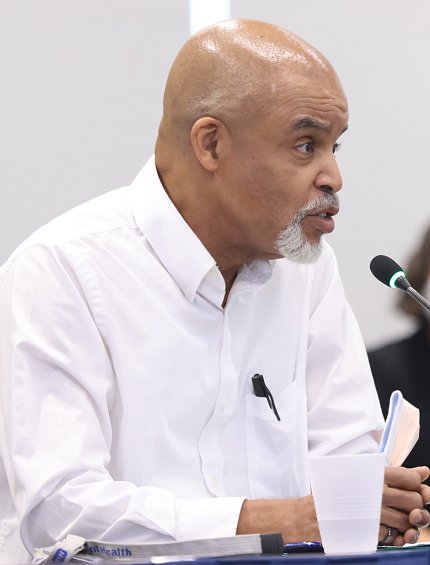
Photo: Chia-Chi Charlie Chang
Amid all the confusion, especially early in the pandemic, “trust had to come into play,” said AED program support Vince Burton, who applauded NIH leaders for their collaboration and guidance.
He reflected on how his group worked together to make sure each piece of the puzzle was placed, “so our leadership wouldn’t be inundated with a lot of menial issues.”
Burton manages the AED program—defibrillators, blood pressure machines, trainings—which usually remains in the periphery. “You don’t see it until you really need it,” he said. During the pandemic, he too pivoted to additional duties, including volunteering with the Covid-19 car testing line and verifying staff vaccination data.
“We were happy to put in our own piece and make a difference,” Burton said.
During such extenuating circumstances, noted Johnson, “even the smallest piece of this puzzle is very important.”
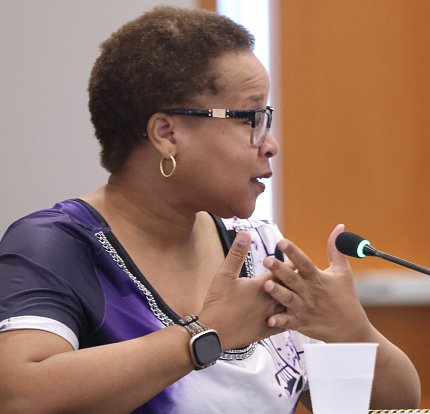
Photo: Chia-Chi Charlie Chang
Rhonda Walther, safety support at NIH’s Baltimore campus, credited longtime relationships for their success in supporting lab, clinical and administrative staff throughout the pandemic.
In Baltimore, their small team “became that first face of DOHS and in some cases the only face of DOHS,” said Walther. She recounted often having to scramble and shift gears to stay informed and get the right answers fast.
Working through the pandemic was “like being in the heat of the battle at all times,” said Lt. Josh Greenberg, who provides safety support in DOHS’s Technical Assistance Branch. His team helped with vaccinations and testing, among other Covid-related duties. “We filled whatever roles were needed and did it happily,” he said.
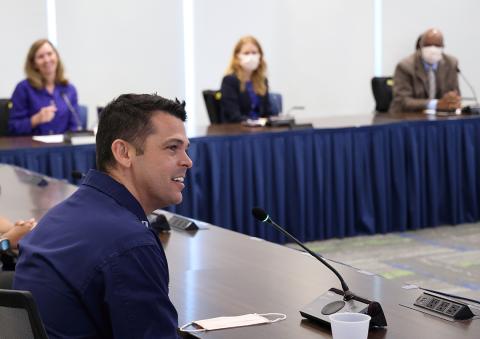
Photo: Chia-Chi Charlie Chang
Greenberg was one of several panelists who deployed with the Public Health Service on multiple health and safety missions during the pandemic. These NIH’ers noted the challenge of juggling their own missions while assuring work coverage when numerous colleagues also deployed.
“As we pivot to more calm seas, I hope you’ll be able to really reflect on your accomplishments and absorb all you have built these last few years,” said Dr. Jessica Chertow, associate director of scientific resources at ORS. “I am struck by the enormity of the machine that you operate, and how refined that operation is, and that has allowed you to achieve and produce at such high levels that no one would have expected,” during such tenuous circumstances. “Keep innovating. Keep looking toward the future.”
